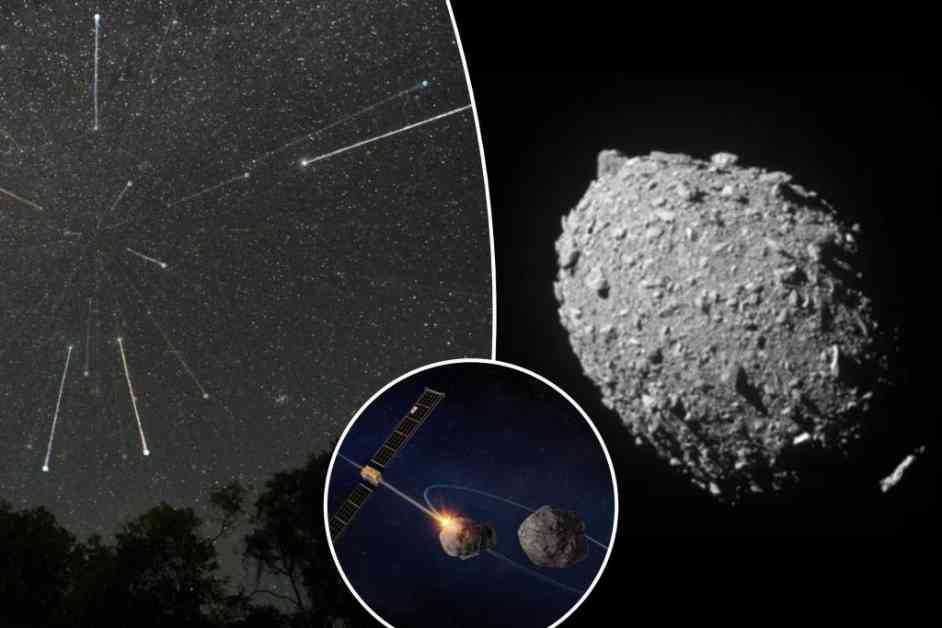NASA’s DART Mission Creates Spectacular Light Show Potential
A recent NASA mission to redirect an asteroid has unexpectedly created the potential for a dazzling light show here on Earth. The mission, known as the Double Asteroid Redirect Test (DART), involved deliberately colliding a spacecraft with a small moonlet named Dimorphos, which orbited the larger asteroid Didymos. While the primary objective of the mission was to assess the feasibility of altering an asteroid’s trajectory to prevent a potential collision with Earth, the unintended consequence of the collision has sparked excitement among scientists and stargazers alike.
Rocket scientist Dr. Eloy Peña-Asensio, from the Polytechnic Institute of Milan, has been studying the effects of the 2022 mission and believes that the debris created by the collision could result in a breathtaking meteor shower. According to Dr. Peña-Asensio, the small size and high speed of the rock pieces will cause them to disintegrate in the atmosphere, producing a beautiful luminous streak in the sky. This unexpected phenomenon has the potential to create a truly unforgettable experience for skywatchers around the world.
Unexpected Meteor Shower Predicted to Pass by Earth
The debris from the collision between the DART spacecraft and the moonlet Dimorphos is expected to travel through space for several years before passing by both Mars and Earth. Early projections suggest that the debris will fly over the red planet in approximately 13 years, with the potential for a meteor shower to occur as it passes Earth in around 30 years. While the exact timing and intensity of the meteor shower remain uncertain, scientists are excited about the possibility of witnessing a celestial event unlike any other.
The research team studying the effects of the DART mission has recently published a paper detailing their findings on the trajectory of the debris created by the collision. Using data gathered from the mission, the scientists have been able to track the path of the debris as it travels through space, providing valuable insights into its potential impact on Earth’s atmosphere. This unprecedented opportunity to study the aftermath of an asteroid collision in real-time has opened up new avenues of research and exploration for the scientific community.
Potential Implications of the DART Mission Debris
In addition to the visual spectacle of a meteor shower, the debris generated by the DART mission has the potential to provide valuable data for future asteroid research. By studying the composition and behavior of the debris as it travels through space, scientists can gain valuable insights into the dynamics of asteroid collisions and their impact on planetary bodies. This information could prove invaluable in developing strategies to protect Earth from potential asteroid impacts in the future.
The unexpected light show created by the debris from the DART mission serves as a reminder of the awe-inspiring power and beauty of the cosmos. As the debris continues its journey through space, scientists and skywatchers alike eagerly await the opportunity to witness this rare and extraordinary event. Whether it’s the brilliant streak of a meteor shower or the scientific insights gained from studying the aftermath of an asteroid collision, the potential impact of the DART mission debris is truly remarkable.













